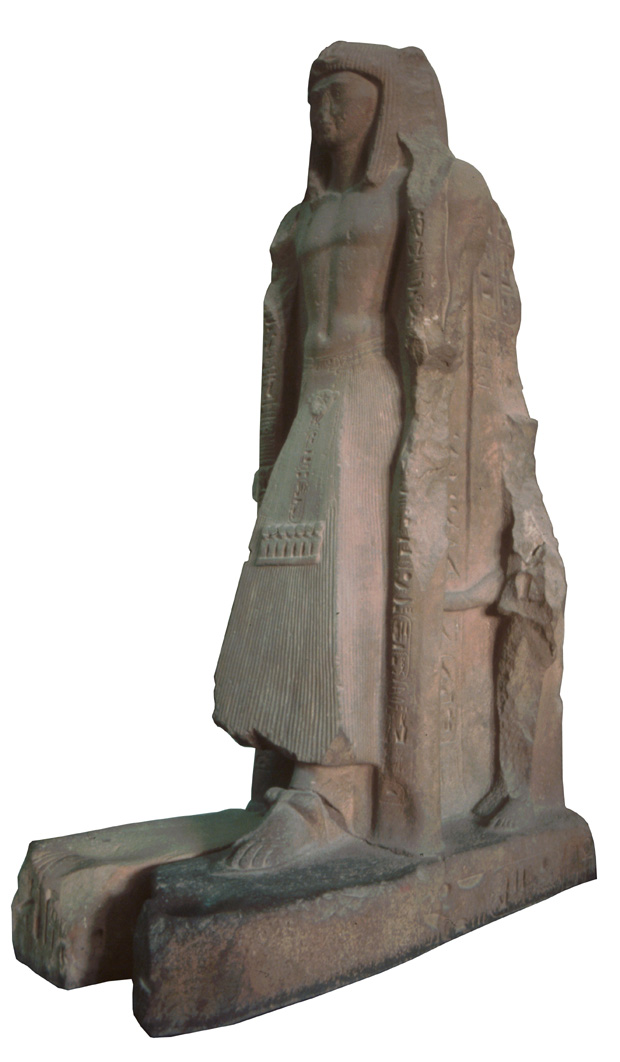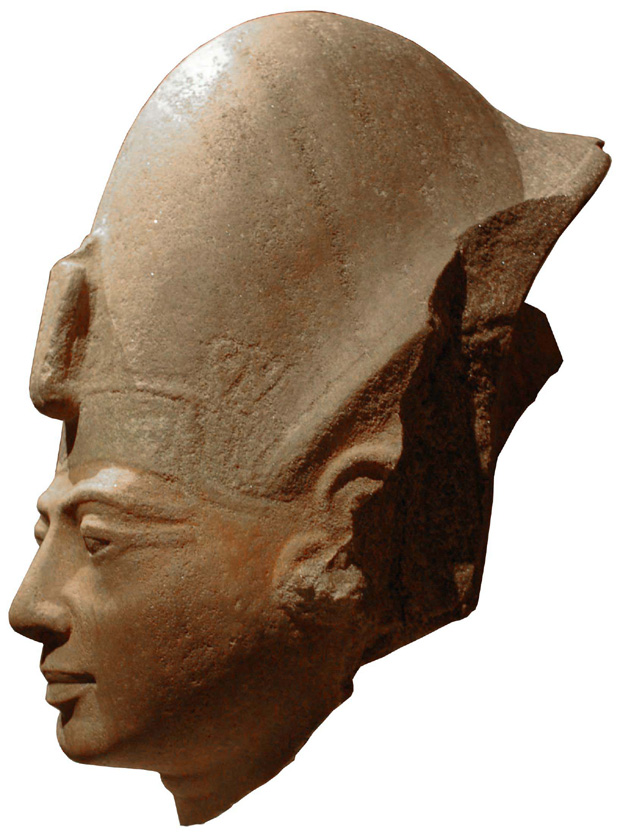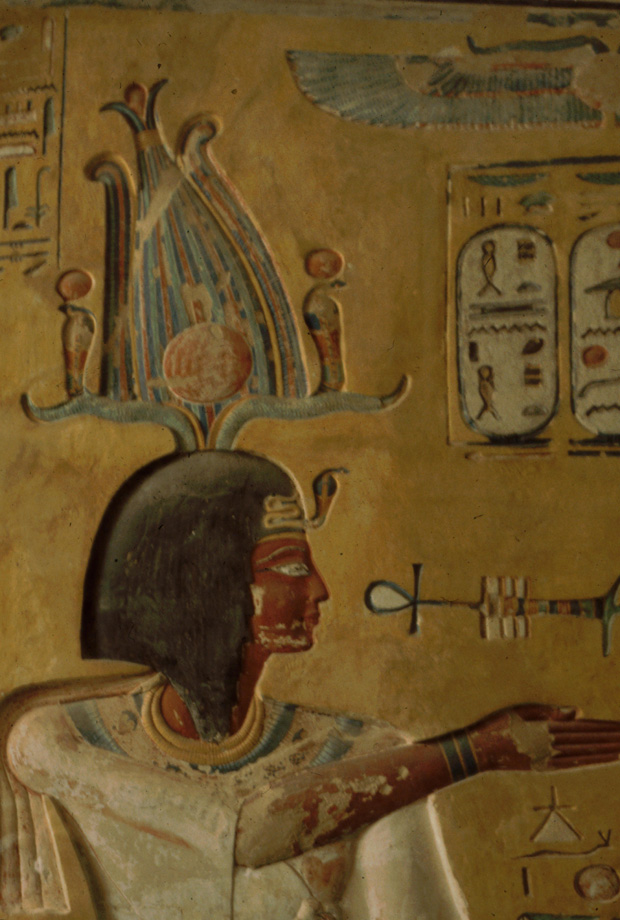The 67-year reign of Rameses II, which occupied much of the 13th century BC, was a time of great prosperity and public works, and for much of its time peace, with the long struggle with the Hittites settled at last by treaty. Yet, a decade after the old king’s death, Egypt fell into a fratricidal civil war, followed by a few years during which a child was king, the puppet of an ambitious commoner and a queen. The latter then seems to have had her partner-in-rule executed, and then may even have had a hand in the death of her young ward, upon which she became female king until herself overthrown a year or so later.
What lay behind these struggles within the royal family?
written and photographed by Aidan Dodson
While any certain answer is lost in the mists of time and almost nonexistent textual and archaeological evidence, there is a strong suspicion that a clue may lie in a fundamental change made by Rameses II and his father, Sethy I, in the public status of lesser members of the Egyptian royal family.
Prior to the advent of their dynasty (the Nineteenth), the public face of the royal family was restricted to the king and his chief queen. Royal children were rarely to be found on public monuments, with royal sons conspicuous by their absence, except in a few cases where they appeared by virtue of holding some public office — not by virtue of being a king’s son. Indeed, most of the evidence for the royal family of the preceding Eighteenth Dynasty comes from the tombs of royal children themselves or from those of their tutors, who celebrated their closeness to royalty by showing themselves in the company of their charges. It was only with Amenhotep III and his son, the heretic king Akhenaten, that things started to change, with daughters regularly shown accompanying their parents — and just once a son.
But these tentative steps were taken much further under Sethy I and Rameses II. Perhaps compensating for the fact that they came from a line of commoners — Sethy’s father, Rameses I, had been a provincial army officer, who rose to be the childless King Horemheb’s vizier and then heir — these kings, and in particular Rameses II, celebrated their children on the walls of temples throughout Egypt. In particular, the fecund Rameses II adorned walls with seemingly endless processions of his sons and daughters, who numbered together around a hundred. In this celebration of royal status, individuals who would hitherto have remained in palatial obscurity were elevated to public figures, which may have led to the fostering of ambitions that might have remained dormant at earlier times (although even then we have hints at younger sons coming irregularly to the throne at the expense of elder siblings).
It is thus against this background that we may view the seizure of power by Amenmeses some 11 years after the death of Rameses II. Amenmeses seems to have been a younger son of Sethy II, the son and successor of Rameses’s 13th (but eldest surviving) son, Merenptah. While power seems to have transferred smoothly, within months Amenmeses had led a Nubiabased rebellion against his father. For four years Amenmeses controlled the south of Egypt, perhaps as far north as Fayyum, until finally set aside, leaving Sethy II again the master of all Egypt.
[caption id="attachment_522291" align="alignnone" width="620"] Statue of Sethy II and his first wife Takhat, the mother of Amenmeses, from Karnak and now in the Egyptian Museum, Cairo.[/caption]
[caption id="attachment_522292" align="alignnone" width="620"]
Statue of Sethy II and his first wife Takhat, the mother of Amenmeses, from Karnak and now in the Egyptian Museum, Cairo.[/caption]
[caption id="attachment_522292" align="alignnone" width="620"] Head of a statue of Amenmeses, from Karnak and now in the Metropolitan Museum of Art, New York.[/caption]
Head of a statue of Amenmeses, from Karnak and now in the Metropolitan Museum of Art, New York.[/caption]
Yet within a year Sethy was dead, and on the throne was a boy named Siptah — seemingly a son of the defeated Amenmeses. Ruling for him was Sethy II’s widow, Tawosret and a senior official named Bay who, contrary to normal decorum, is shown on the same scale as the king and queen on monuments — and makes the extraordinary claim that he “placed the king on the seat of his father” — that he was kingmaker. One can but speculate on the personal relationship between Tawosret and Bay, but after five years it came to an abrupt end, when Bay was executed on the orders of ‘the king’ — given Siptah’s tender years, presumably actually those of Tawosret.
[caption id="attachment_522293" align="alignnone" width="620"] Queen Tawosret, as shown in her tomb in the Valley of the Kings.[/caption]
Queen Tawosret, as shown in her tomb in the Valley of the Kings.[/caption]
But Siptah was not long for this world. The following year, he was also dead, with his names erased from the walls of his tomb and Tawosret now elevated to kingship, continuing the year-count of Siptah as though she had throughout regarded herself as the real monarch. However, opposition had been kindled almost from the moment of Siptah’s death, when a certain Sethnakhte — of unclear origins, but probably a scion of the royal family — raised the standard of rebellion, and within two years was himself pharaoh. Nothing is known of Tawosret’s fate after her defeat, which marked the beginning of three decades of relative stability under the Twentieth Dynasty — before the poisoned legacy struck again in the form of the cut throat of Rameses III: but that is another story!
[caption id="attachment_522295" align="alignnone" width="620"] Siptah at the entrance to his tomb in the Valley of the Kings; his cartouches have been erased, but later reinstated, probably by Sethnakhte, after the overthrow of Tawosret.[/caption]
Siptah at the entrance to his tomb in the Valley of the Kings; his cartouches have been erased, but later reinstated, probably by Sethnakhte, after the overthrow of Tawosret.[/caption]
Dr Aidan Dodson is a Senior Research Fellow in the Department of Archaeology and Anthropology at Bristol University, UK.

Comments
Leave a Comment